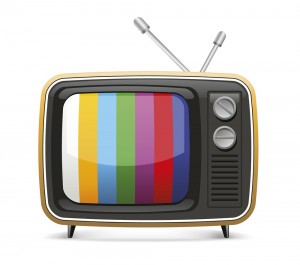
Some readers of this column are old enough to recall “I want my MTV!,” one of the most successful branding and awareness campaigns in media history. I do. I wanted MTV, too, but back in that primitive era, my first Manhattan apartment wasn’t yet wired for cable, so no dice.
Fast-forward: not only did I finally get cable, I worked in cable. I held senior marketing positions at a handful of networks before leaving television — both the profession and the connection — behind for the brave new world of digital.
Or so I thought. Suddenly, there’s ever less discernable difference between television and online programming. The options are as dizzying as the satellite multiverse: Netflix, Hulu, Netflix, Hulu, Roku, Amazon, Chromecast, and Apple TV. Last week, NBC streamed the Super Bowl (free) for the first time to all comers.
CBS launched All Access, a standalone streaming service delivers hit shows and the back catalogue for $5.99 a month, and HBO is poised to go well beyond its cable-bundled HBO GO streaming service by delivering a standalone service this April.
“It is time to remove all barriers to those who want HBO,” said Chairman and CEO Richard Plepler in a statement, “All in, there are 80 million homes that do not have HBO and we will use all means at our disposal to go after them.”
Television isn’t going away any time soon, but its delivery method is changing at warp speed. According to one study cord-cutting exploded from 25,000 unsubscribers in a 3-month period in 2013 to 150,000 in that same period last year. U.S. broadband-only homes are currently at roughly 10 million.
Sony, DISH, and other providers are racing to bring broadband-based television platforms to market. Their goal is not only to attract cord-cutters, but the legions of households that will never have had cable or satellite to begin with.
Bottom line: the screens that television are delivered to in the very near-term future will be no different from the ones used now for the web. Screens are screens, and programming is programming. It was mildly amusing to hear reports last week of filmmakers at Sundance holding out for “real” studio deals rather than sign with Netflix or Amazon.
Because really, what’s the diff?
Television won’t go away, nor will feature films. But when we experience them on digital screens, small or large — the same ones connected to our computers, gaming systems, smartphones, tablets, and even the Internet of Things, things will change — rapidly.
All advertising will be digital, therefore addressable. Brand experience will fragment across a multiplicity of devices, necessitating tight content strategies and unity of voice and tone, look and feel, in order not to deliver fragmented, discordant messaging. Media choices will become harder because there will be ever more channels and form factors. Personas will multiply — this week, Lexus is launching more than 1,000 videos on Facebook, each tuned to a different target.
Very soon, almost before you know it, advertising to television audiences will differ only very slightly from advertising on the web. Audiences won’t recognize the difference between the channels, nor will they care.
